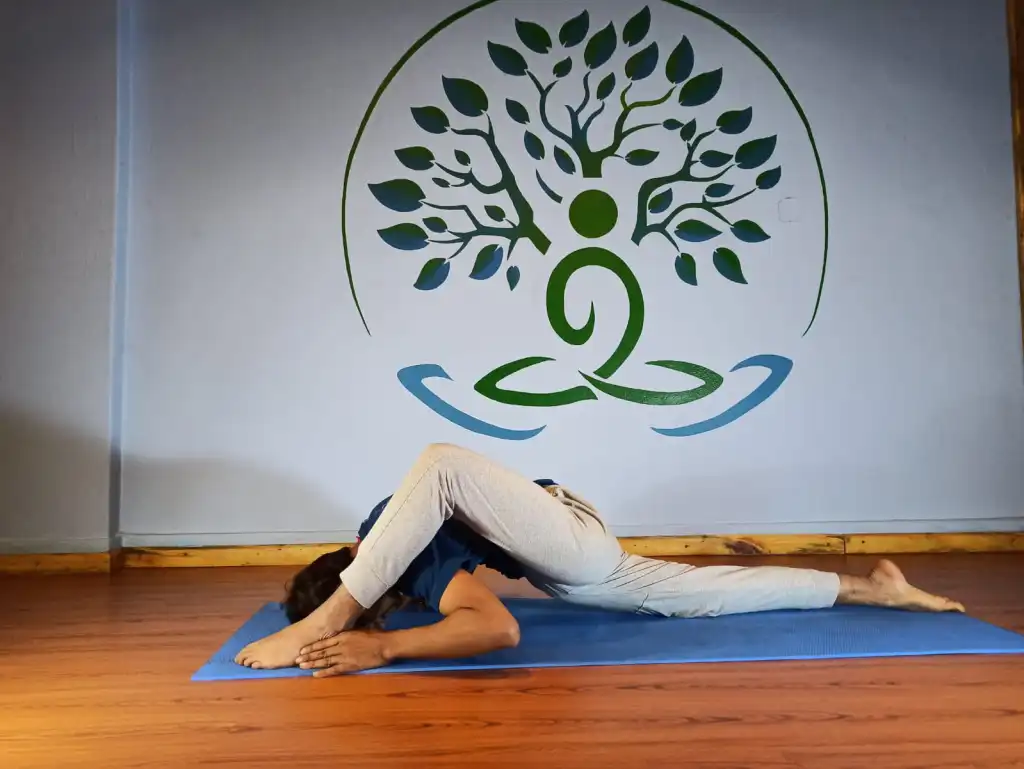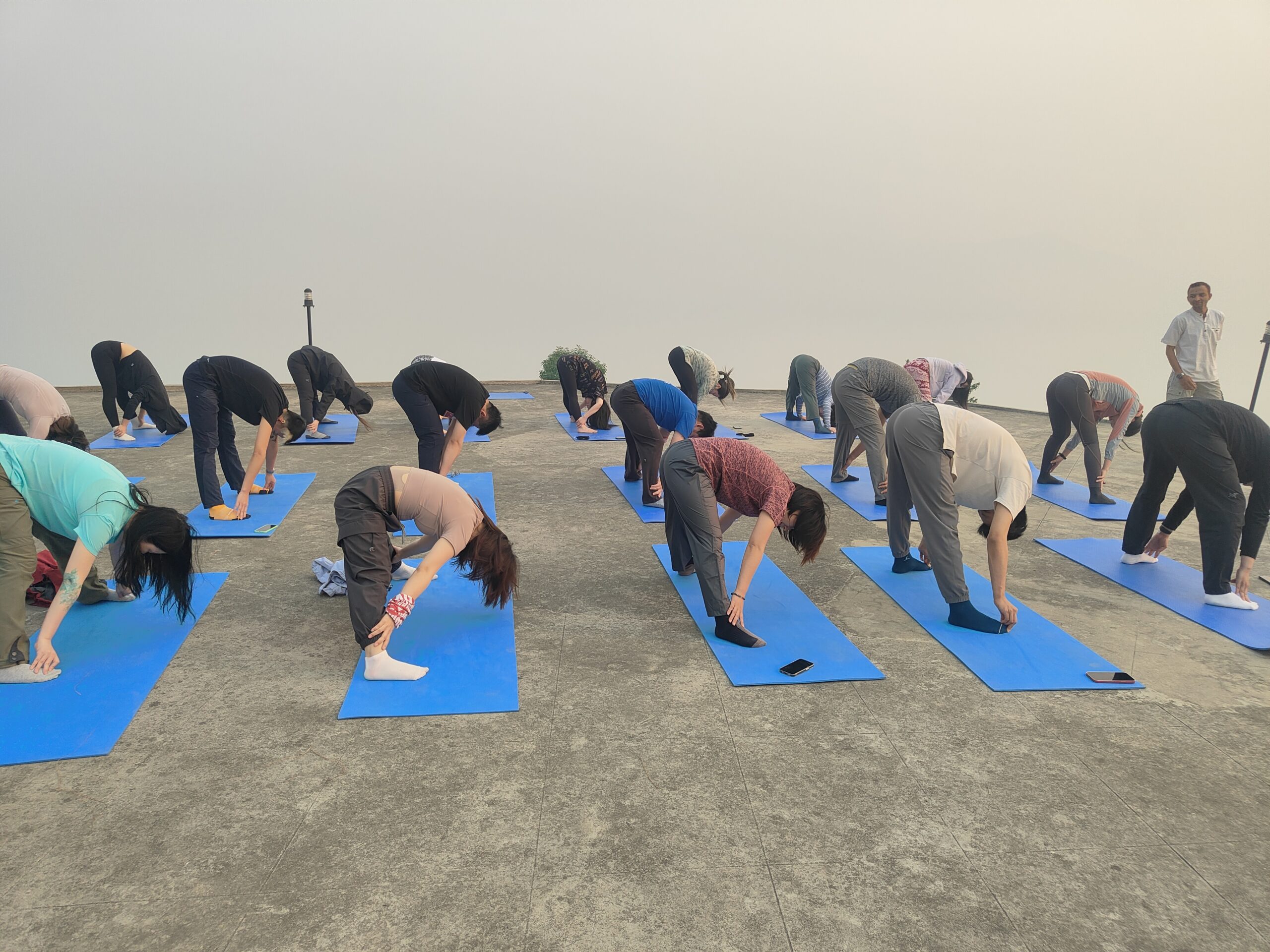In a world filled with stress and constant motion, the need for physical and mental well-being has become increasingly important. Two popular yoga practices that have gained widespread recognition for their transformative effects are Hatha Yoga and Ashtanga Vinyasa Yoga. Rooted in ancient Indian traditions, these yoga styles offer distinct approaches to harmonizing the body, mind, and spirit. In this article, we delve into the essence of Hatha Yoga and Ashtanga Vinyasa Yoga, exploring their origins, principles, and benefits.
Hatha Yoga: -Embracing Balance and Harmony, the physical discipline.
Hatha Yoga, originating from the Sanskrit words “ha” (sun) and “tha” (moon), represents the union of opposing forces. It is a comprehensive system that encompasses physical postures (asanas), breath control (pranayama), meditation, and spiritual practices. Hatha Yoga aims to bring balance and harmony to the practitioner’s body and mind.
Asanas:- Hatha Yoga places significant emphasis on asanas, which involve holding postures and stretching the body to enhance strength, flexibility, and balance. The practice helps in improving overall physical well-being and cultivating mindfulness.
Pranayama:- The art of breath control, pranayama, plays a vital role in Hatha Yoga. It involves various breathing techniques aimed at regulating and balancing the flow of vital energy (prana) within the body. Pranayama techniques bring about mental clarity and relaxation.
Meditation and Spiritual Practices:- Hatha Yoga encompasses meditation and spiritual practices to achieve a deeper connection with oneself. These practices facilitate self-awareness, inner peace, and spiritual growth.
Hatha Yoga offers a gentle and accessible approach, making it suitable for practitioners of all ages and fitness levels. It encourages self-exploration and allows individuals to listen to their bodies, fostering a sense of self-acceptance and well-being.
Ashtanga Vinyasa Yoga: -The Dynamic Path to Transformation
Ashtanga Vinyasa Yoga, often referred to as Ashtanga Yoga, is a dynamic and physically demanding style that focuses on synchronizing breath with a flowing series of postures. Developed by Sri K. Pattabhi Jois, Ashtanga Vinyasa Yoga follows a set sequence of asanas, with each movement linked to the breath.
Vinyasa:- The term “vinyasa” denotes the connection between breath and movement. In Ashtanga Yoga, each posture is linked with a specific vinyasa, a flowing transition guided by conscious breathing. The rhythmic flow generates heat, detoxifies the body, and builds strength and stamina.
Tristhana:- Ashtanga Yoga emphasizes the concept of tristhana, which involves focusing on three key elements:- breath (pranayama), posture (asana), and gazing point (dristhi). This trinity creates a meditative state of concentration, promoting mental clarity and introspection.
Bandhas:- They are the three key elements of ashtanga vinyasa, alongside breath and Drishti. There are three bandhas which are considered as internal body locks:-
1)Mula Bandha or root lock at the pelvic floor.
2)Uddiyana Bandha or abdomen lock, two inches below the navel.
3)Jalandhar Bandha or throat lock, lowering the chin slightly while raising the sternum.
Breath:- In Yoga Mala, Pattabhi Jois recommends remaining in each posture for five to eight breaths, or else staying in each posture for as long as possible. Breathing instructions given are to do exhale and inhale (rechaka and puraka) as much as possible. In an interview regarding the length of breath, Pattabhi clarifies, if breath strength is possibly ten seconds inhalation and exhalations, just do ten, if one hundred seconds possible, you perform hundred. In ashtanga practice breathing is fully and deeply with the mouth closed.
Progression and Mysore Style:- Ashtanga Yoga follows a specific sequence of asanas that progressively challenges the practitioner’s physical and mental abilities. In the Mysore style, named after the city in India where it originated, practitioners move through the sequence at their own pace, under the guidance of a teacher.
Ashtanga Vinyasa Yoga offers a disciplined and transformative practice that builds strength, flexibility, and endurance. It cultivates self-discipline, self-awareness, and a deeper connection with the body and breath.
Benefits of Hatha Yoga and Ashtanga Vinyasa Yoga:-
Physical Well-being: Both Hatha Yoga and Ashtanga Vinyasa Yoga enhance physical fitness, increase strength and flexibility, improve posture, and promote overall well-being.
Mental and Emotional Balance: The practice of yoga, regardless of the style, helps reduce stress, anxiety, and depression. It cultivates mindfulness, improves focus, and encourages a positive mindset.
Spiritual Growth: Hatha Yoga and Ashtanga Vinyasa Yoga offer a path for spiritual exploration and self-discovery. They provide a framework for connecting with the inner self and developing a deeper understanding of one’s place in the universe.
Conclusion:-
Hatha Yoga and Ashtanga Vinyasa Yoga are two powerful practices that bring transformation and harmony to the body, mind, and spirit. While Hatha Yoga focuses on balance and gentle self-exploration, Ashtanga Vinyasa Yoga offers a dynamic and disciplined path to physical and mental transformation. Both styles offer numerous benefits, including physical fitness, mental well-being, and spiritual growth. Whether you choose the gentle journey of Hatha Yoga or the dynamic flow of Ashtanga Vinyasa Yoga, embracing either practice can lead to a profound sense of well-being and self-discovery in today’s fast-paced world.







